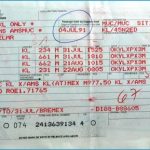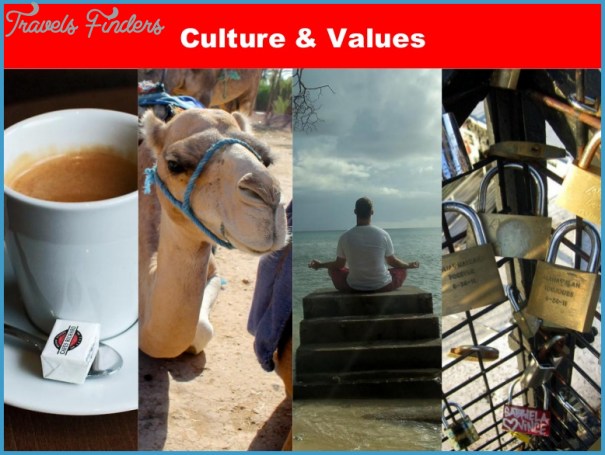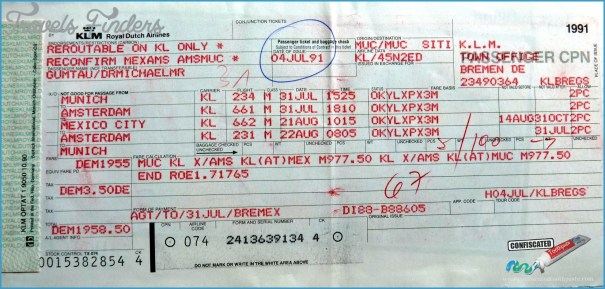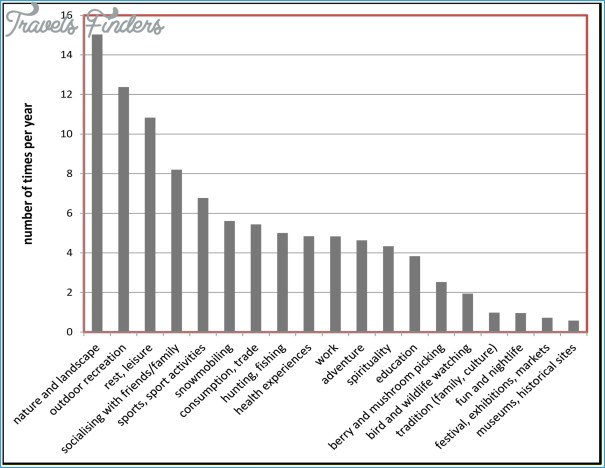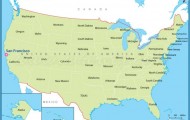Cultural Identifiers Travel and Their Value
Each time we interact with a stranger, there’s a significant amount of uncertainty. When that interaction occurs between people from different backgrounds, cultures, and languages, the level of unknown is magnified significantly. To convey our background and express ourselves while reducing that uncertainty we dress a certain way, talk a certain way, and when it comes to travel, we present ourselves a certain way.
Consider, why does the finance professional wear a suit and choose from a very specific set of haircuts while the tattoo artist opts for an edgy look that showcases creativity? What story do we choose to tell with our tattoos, our hair color, our matching or mismatched socks and the jacket we decide to wear on a crisp autumn evening? Each aspect of our appearance is a carefully, if subliminally, constructed series of signals we’re communicating. Yet, when it comes to opening conversations with strangers, we’re often far more hesitant to share these cues.
It’s a common desire among travelers to fit in. This has significant advantages in the form of increased safety, added opportunity for cultural immersion, and the chance for increased experiential engagement. However, it also makes it significantly harder for you to communicate basic information about yourself to the strangers you have an active desire to communicate with.
Cultural Identifiers Travel and Their Value Photo Gallery
While we will almost always be readily identifiable as an outsider to locals due to the brands we wear, the camera slung over our shoulder, or the day-backpack we’ve got strapped to our backs, it’s not impossible to blend in with a little effort. At which point you’ll notice your interactions begin to change, both with locals and other travelers. This can be great, but it can also create challenges and confusion.
So, where does ‘Howdy come into all of this?
No matter how you’ve adapted to blending in or how hard you’ve worked to perfect the look of a local, the moment you open your mouth and utter a word people will know you’re an outsider. Often, what they’ll have trouble identifying is where you are from, and how to engage with you. Unless that is, you decide to help them As an American from the Southwest, that’s where the word howdy enters my equation.
With one word, I can share a wealth of information as I strike up a conversation. It tells them I’m probably from the U.S.A. that I’m a native English speaker, that I’m ok with a slightly more casual interaction, and that I’m likely friendly and open. One word used at the very onset of the conversation creates and establishes a baseline of common information upon which we can build a more comfortable interaction and a less awkward conversation.
To be clear, I’m not suggesting that you always use a cultural identifier, only that you consciously add one to your vocabulary and consider its value. As an American howdy is easy and differentiates me from other non-native English speakers, who use hello as well as other native English speaking cultures who also use hello but are not American. If I were Japanese, I’d probably opt for a big smile and konnichiwa, or if I was Italian the same but with buongiorno.
The catch? This flies in the face of all the advice you’ve probably previously been given about traveling abroad. That advice, almost without fail, suggests learning a few key words in the local language hello, thank you, where is the toilet you know the ones I mean.
All of which is great. But, it’s ultimately a question of your goal. Do you want to empower and ease your communication with the person or do you want to attempt to engage them? While it’s a lovely show of interest in the local culture, unless you’re able to understand their response and engage in at least two to three exchanges afterward, all you’ve done is made your interaction significantly more complicated and created a barrier to communicating.
Examples
The first time I realized the benefit of using a cultural identifier like howdy, was during an off-season trip to the Greek island of Crete. I’d been on the road for 2+ months already and was apparently dressing more like a European than an American. When combined with my international facial features I could have been from almost anywhere. Time and time again in stores, or when interacting with street vendors, they would approach me and begin to work through a variety of languages.
Most started with German, then switched to French, then often Italian before eventually growing slightly frustrated and defaulting to English. These were individuals I wanted to communicate with, but with whom I was accidentally making communication significantly more difficult. The moment I started responding to their inquiry with an open and sincere smile, and a howdy we immediately began communicating more effectively.
Hostel common areas provide another excellent example. In these spaces, there’s really only one well-grounded assumption to be made that the people you’re about to interact with could be from anywhere in the world. In these spaces, the level of social uncertainty is magnified. While almost everyone is eager to socialize there’s a high level of uncertainty in the initial interaction. In these types of situations, everyone is hungry for any hint that helps them relate and connect with other people. Once again, this is a perfect chance to use a cultural identifier to help reduce anxiety and build common ground.
One of the most interesting situations is when the shoe ends up on the other foot, which in this case, is when locals or other foreigners approach you with questions. These instances can be somewhat awkward, as you may or may not have a decent familiarity with the area or subject they’re asking about. They’ve approached you, a perfect stranger, with the assumption that you’re probably local, and they have already taken a social “risk.”
That risk they’ve taken? It’s made more awkward if you don’t understand their inquiry, or if you have to ask them to restate it. A process which can be accelerated, or avoided altogether with a word or two right off the bat. The added benefit is that words like bonjour and howdy can be spoken immediately, even if the other person has already started to talk, without being impolite.
Subtle Language Requests
To be fair, when you use a cultural identifier like howdy you’re doing more than just expressing information about yourself. You’re also subtly inviting the other person to have the conversation in your native language.
If you’d prefer to try and remain in the other person’s native language, it may be worth considering what regional salute is suited to that language, or opening with your own cultural identifier and then adding a brief phrase in the local language. This tells them your native language, but then also indicates that you’re interested in continuing in their language.





